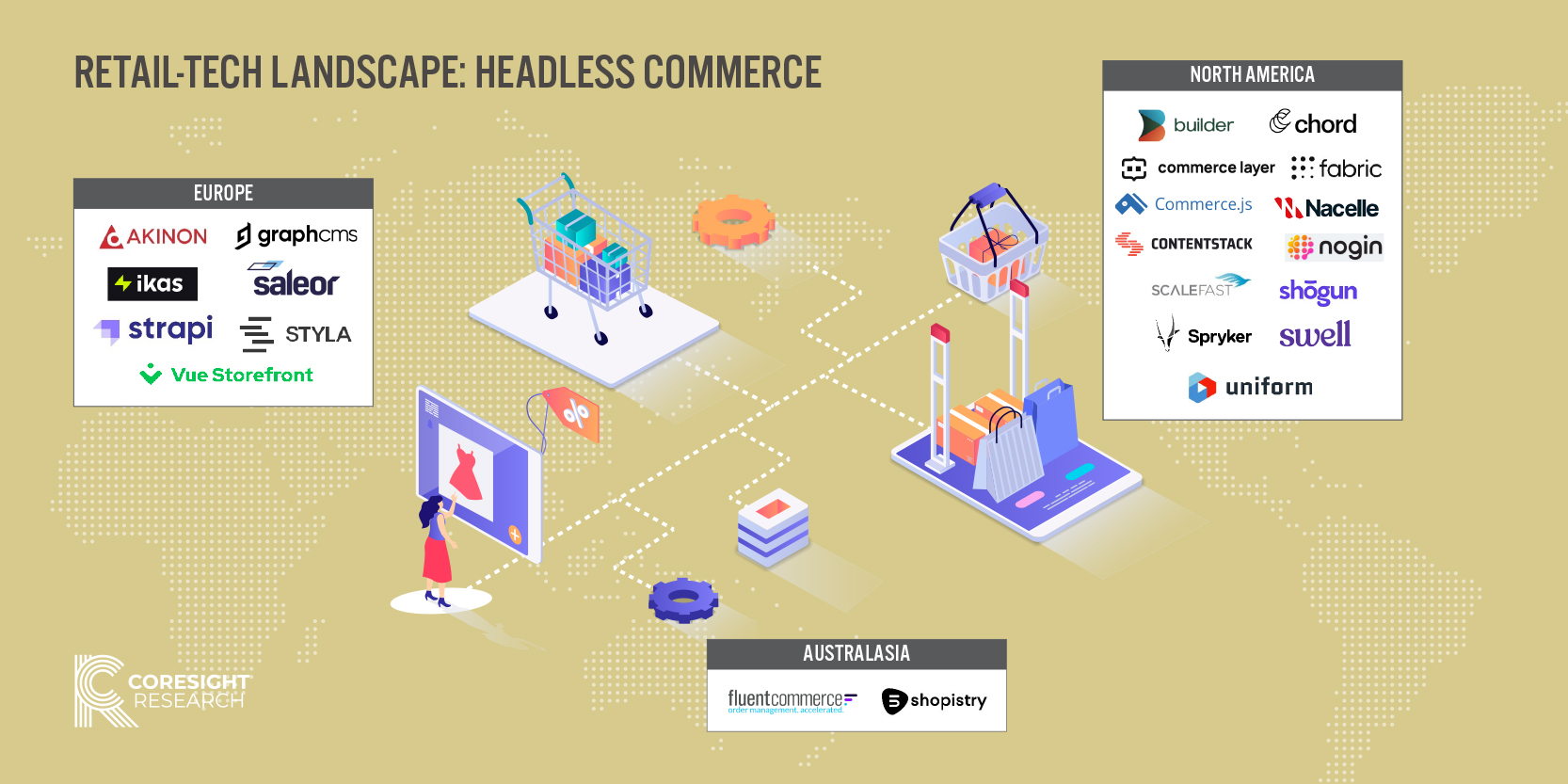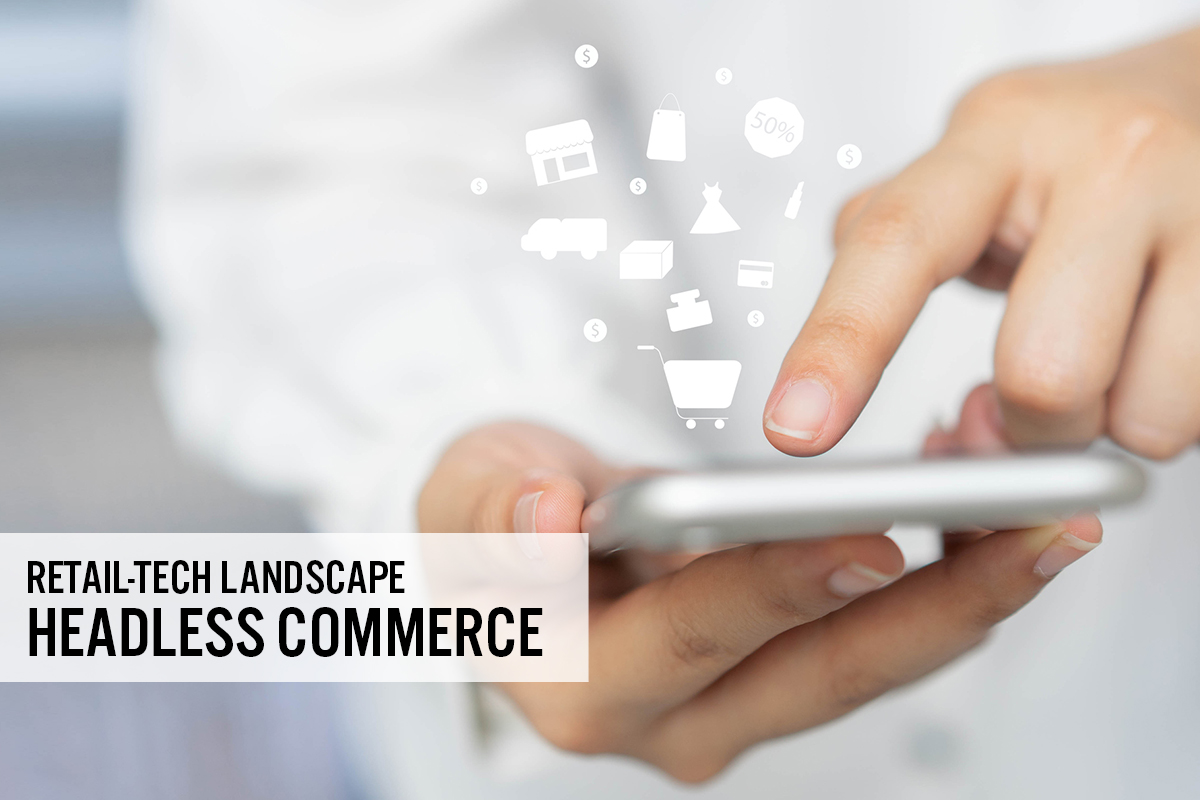Retail-Tech Landscape: Headless Commerce
The rise of e-commerce has shone a spotlight on the importance of effective e-commerce infrastructure and the need for retailers to streamline their omnichannel operations. Advances in technology present an opportunity for retailers to move toward headless commerce, strengthening their capacity to compete in an ever-evolving retail landscape.
Headless commerce—identified by Coresight Research as a key
US e-commerce tech trend for 2022—involves decoupling the front and back ends in commerce infrastructure (enabling back-end changes without interfering with the front) while allowing for integration through APIs (application programming interfaces). This enables improved flexibility, scalability and agility for retailers. Mid-size and large e-commerce retailers are already using this technology strategy, as well as sophisticated commerce-as-a-service (CaaS) solutions, according to a Coresight Research survey of US e-commerce leaders conducted in October 2021. We expect smaller retailers to look to adopt headless commerce solutions as they seek to keep up with bigger e-commerce players.
This
Retail-Tech Landscape covers selected startups globally that are playing a significant role in headless commerce. We have identified 22 startups across three regions:
- Australasia
- Europe
- North America
Headless Commerce Trends in Retail
Below, we highlight two key trends in the headless commerce space.
1. Retailers Are Switching from Legacy Enterprise Platforms to Headless Commerce
The benefits of headless commerce have attracted different retailers to switch over from other e-commerce builds and we expect more brands and retailers to follow suit going forward.
- Bed tent retailer Privacy Pop switched to headless commerce functionality in February 2021 after suffering slow website loading speeds and high bounce rates. As a result, the retailer has seen major improvements, including an average homepage load time of just two seconds, according to the company.
- In 2019, LEGO partnered with headless commerce platform Commercetools to address its prior dissatisfaction with enterprise platforms and has since seen significantly improved speed to market.
2. Solution Providers Are Enhancing Storefront Experiences for Clients
Headless commerce solution providers are starting to enhance storefront offerings for their clients, enabling them to easily provide highly customized shopping experiences.
- In January 2022, unified commerce solution provider Kibo Commerce released three storefront accelerators for developers using headless commerce solutions, which will enable retailers to create storefronts or build out custom features on existing platforms efficiently and effectively. This comes as an attempt to reduce deployment barriers for headless commerce solutions, making it simpler to build storefronts.
- Commercetools is also exploring market opportunity around composable front-end platform In November 2021, the company announced its acquisition of front-end platform Frontastic to broaden its reach of commerce technology that enables the creation of differentiating user experiences.
Retail-Tech Landscape: Headless Commerce—Infographic

Retail-Tech Landscape: Headless Commerce, by Region
Australasia
[wpdatatable id=1891 table_view=regular]
Europe
[wpdatatable id=1892 table_view=regular]
North America
[wpdatatable id=1893 table_view=regular]

